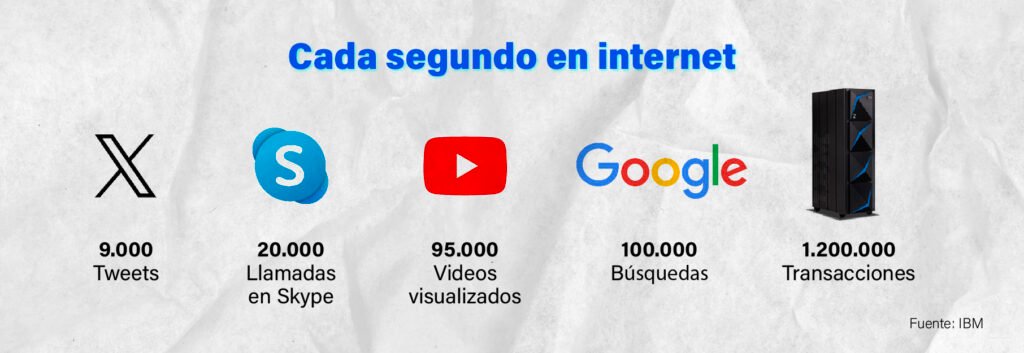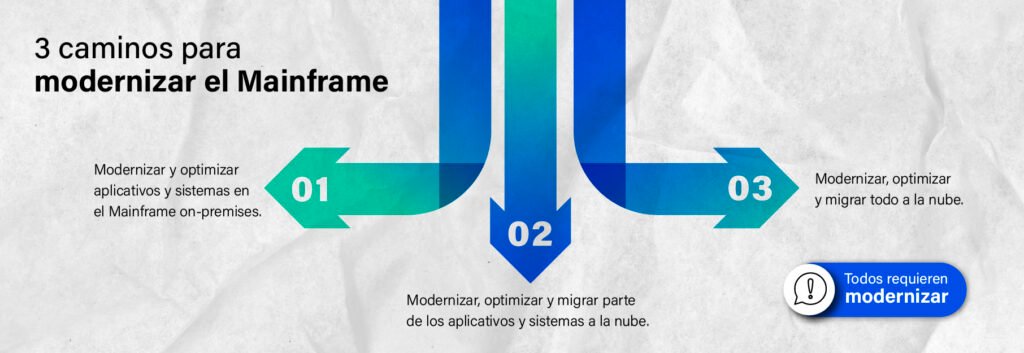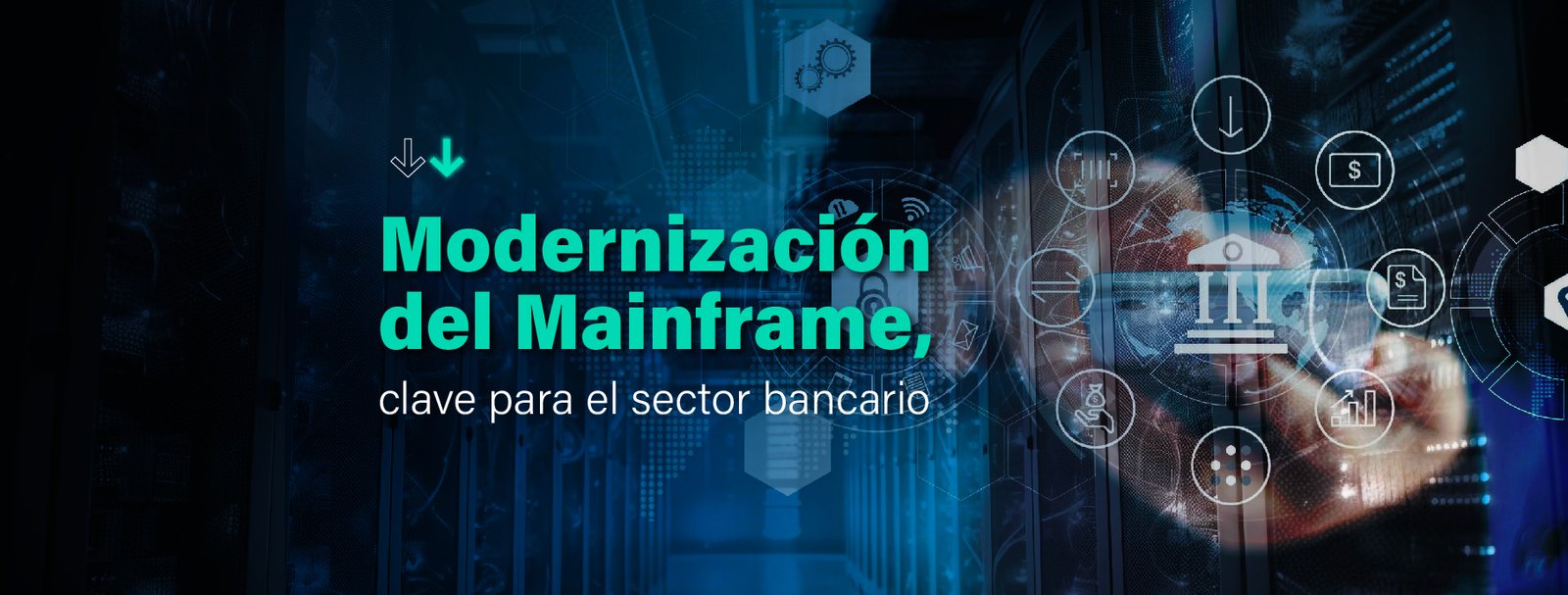Mainframe modernization as a key to success in the banking sector
A few days ago, mainframes celebrated their -first- 60 years of existence.
In a field where technological evolution encourages frequent replacement, mainframes are an exception.
They have been and continue to be fundamental for the banking sector., for its unique characteristics: reliability and capacity for mass processing, data storage and simultaneous execution of multiple tasks.
The report Kyndryl 2023 State of Mainframe Modernization Survey Report, reveals through the responses of the main users of this technology throughout the world that mainframes remain essential for business operations.
Their robust architecture and ability to run various operating systems and applications make them extremely versatile and suitable for the banking sector.
And they are valued by users for their levels of security (68%), reliability (60%) and performance (55%).
In fact, the The mainframe world is made up of 92% of the major banks commercials.
Such is its relevance that it would not be possible to view a bank balance on a cell phone or process a credit card purchase if there were not a Mainframe behind it.
Why modernize a financial institution's mainframe?
He 67% of organizations decide to move forward with modernizing their mainframe for optimize their performance and capacity, and to rationalize the software.
This is a key fact in a context in which the mainframes of financial institutions are at the limit of their capacity.
Due to the validity that we mentioned before, as with all technologies that evolve, it is It is essential to address its modernization and optimization, to ensure that it remains an efficient and secure platform.
Modernizing and optimizing the mainframe provides the following benefits:
- Improve performance and efficiency: Being a very powerful platform, it requires optimization to take full advantage of its capacity. This can be achieved by optimizing applications, reducing resource consumption, and updating transactional and functional architecture, among other strategies.
- Reduce costsModernization helps organizations reduce operating costs by reducing resource consumption and automating tasks.
- Improve security: The mainframe is a secure platform and it is important to take advantage of it by taking measures to protect it from current threats. Modernization Improves system security, by implementing security patches and access controls, and training in security best practices.
- Have support for problem solving: While operating systems are super stable, the problem is that sometimes an operating system that is no longer supported or sold will still work.
This speaks to the robustness of the software, but, on the other hand, if a problem occurs it cannot be addressed.
So mainframes need to be updated. A supported system is essential for the supplier company to be able to provide adequate attention to a problem..

Among the advantages that mainframe modernization and optimization bring to financial institutions, the following should also be taken into account:
- Increase agility: allows banking institutions to adapt more quickly to market changes, implement new functionalities and respond more quickly to the changing demands of the sector and customers.
- Improving user experience: Banks can offer more personalized, agile and secure services.
- Ensuring regulatory compliance: by protecting sensitive financial data, the confidentiality and integrity of customer information, and ensuring compliance with applicable regulations.
- Facilitate integration with emerging technologies: offers the possibility of more easily integrate emerging technologies, such as artificial intelligence, machine learning and advanced analytics, among others.
Finally, it is worth noting that failure to modernize mainframes can represent a considerable risk to the continuity of the banking business.
Modernization can help reduce it, by Keep systems up to date and aligned with industry best practices.
How to accelerate and secure mainframe modernization?
Banks can successfully accelerate and secure the modernization of its mainframe infrastructures, following some fundamental steps specific to the technological implementation and updating processes:
1. Define clear objectives and a strategic vision for mainframe modernization, through the Identifying priority systems and applications for upgrade.
2. Gain support from senior management, IT teams, and other stakeholders, and align modernization efforts with organizational goals, to ensuring successful adoption of modernization.
3. Conduct a detailed assessment of existing mainframe infrastructure and applications to determine areas for improvement and modernization opportunities.
4. Identify and prioritize modernization areas that will deliver the Greater return on investment and business benefits.
5. Implement development, automation and project management tools that facilitate and streamline the modernization process.
6. Use agile software development approaches to iterate rapidly, and respond flexibly to changing requirements and priorities. Even an incremental approach to maintain continuous functionality while gradually integrating improvements.
7. Implement training and communication programs with the aim of ensure that teams are prepared for changes and can take full advantage of new technologies and processes.
8. Integrate security and compliance measures into all stages of the modernization process to protect sensitive data and comply with applicable regulations.
9. Implement a continuous monitoring and optimization process to ensure modernized solutions operate efficiently and meet long-term business objectives.

Criteria to consider when defining a modernization project
To the undertake a mainframe modernization projectThe key is to develop careful planning and strategic execution, identifying what needs to be improved and updated, and from there building an appropriate work roadmap.
While there is no single roadmap that can be replicated across many financial institutions, the market is always defining generic criteria for infrastructure modernization through the launch of new machine models and new software versions.
For example, in the case of a mobile home banking application, the API Rest format is generally used, which allows the transformation of data coming from transactions running on the mainframe so that they can be accessed from a cell phone.

Therefore, when defining a mainframe modernization project and its associated roadmap, a financial institution must consider several key criteria:
- Identify the commercial and strategic objectives that drive modernization, such as improving operational efficiency, increasing agility, enhancing customer experience, or complying with specific regulations.
- Evaluate the costs associated with modernization and expected benefits, including operational cost savings, increased revenue, risk reduction and improved competitiveness.
- Prioritize mainframe applications and systems business critical, which require modernization, considering factors such as their strategic importance, their complexity and their impact on operations.
- Analyze the Compatibility of technologies and platforms target with existing mainframe applications and systems, to ensure that modernization does not cause disruptions to business operations.
- Anticipate challenges and develop mitigation strategies to minimize disruptions during the modernization process, such as potential service interruptions, data loss, or regulatory non-compliance, by implementing security measures, thorough testing, and contingency plans.
- Consider the Impact of modernization on employees and end users, including necessary training, change management, and ensuring a smooth transition and minimal disruption to daily operations.
- Set up a realistic and feasible schedule for modernization, taking into account the complexity of systems and applications, as well as time constraints and available resources.
- Select experienced suppliers and partners and mainframe modernization expertise, ensuring effective collaboration and successful project delivery.
- Define Metrics and KPIs to measure the progress and success of the modernization project, allowing for adjustments and corrections
Conclusion
When starting a mainframe modernization project, it is important to perform an analysis of the current situation to identify the areas that need to be modernized and develop a work plan that details the actions to be performed and the expected timeframes.
In IT Patagonia We specialize in this technology and its complex modernization and optimization process.
We have the best talent and 35 years of experience leading projects for different clients, such as ICBC, Banco Galicia, HSBC, Banco Ciudad, Banco Nación, Banco Provincia and Banco Santander, among others.
Get to know our Mainframe Center of Excellence, with which we are transforming the mainframe for the future.

